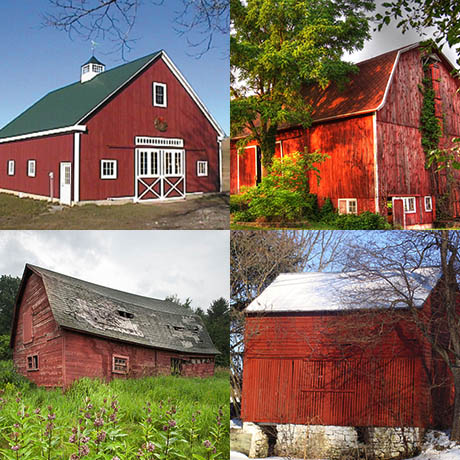
“Why are barns red?” is, apparently, the all-time most popular FAQ at The Barn Journal (sadly, no word on what the second most popular might be).
A few years ago, design writer Steven Heller dedicated his column in Print magazine to this question. It has also been bothering the Chief Architect of Google+, Yonatan Zunger, who published his investigation of the phenomenon yesterday, in a post poetically titled, “How the price of paint is set in the hearts of dying stars.”
Their answers are interesting, and different.
Heller draws on Eric Sloane’s American Barns and Covered Bridges, which explains that until the late eighteenth-century, builders carefully considered a site’s wind, sun, and water exposure in order to position bridges and barns in such a way that the weather would treat the wood:
The right wood in the right place, it was discovered, needed no paint.
By the end of the 1700s, however, farmers began to paint their barns, as “the art of wood seasoning gave way to the art of artificial preservation.” Virginia farmers were, apparently, “the first to become paint-conscious,” although no explanation is given for this shift. Heller does, however, attribute the rise of red, specifically, to both function and fashion.
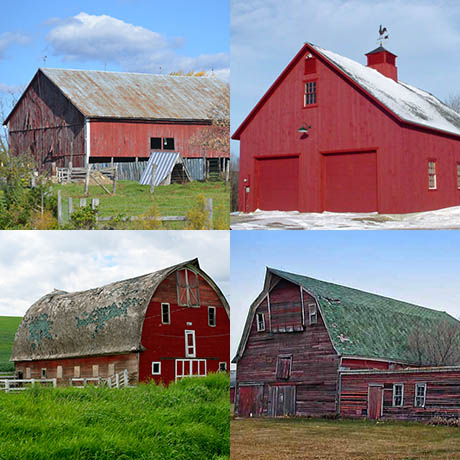
The red colour came from the addition of iron oxide, which is abundant in the soils of the eastern United States, and is equipped with anti-fungal properties (dissolved rust is still used as a DIY anti-moss treatment today). This new-and-improved red barn gradually superseded its unpainted wooden predecessor, becoming the norm.
Heller concludes, somewhat unconvincingly, that having a nice red barn was also an aesthetic choice, as it “became a fashionable thing that contrasted well with traditional white farmhouses.”
Zunger, on the other hand, starts from the premise that barns are red because red paint is the cheapest. This is certainly not the case anymore — a gallon of barn or fence paint from FarmPaint.com costs $8.95, whether it is grey, green, white, brown, or “traditional barn red.”
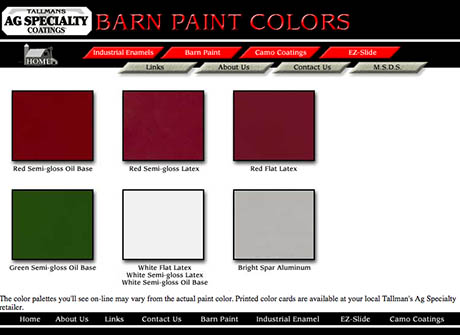
IMAGE: Barn paint colours available from AgSpecialty.com
However, red was the cheapest paint, once. According to an article by preservationist Robert Foley (PDF), red was the ubiquitous colour of eighteenth century England and colonial America, produced by mixing iron-oxide rich milled earth with linseed oil and turpentine. The result was called “Spanish Brown,” and, because the precise mineral content of the soil determined the final colour, it could range “from burnt orange through reds and into browns” — “the exact shade didn’t seem to matter, cost did.” Other pigments, such as white lead or verdigris green, required an extensive manufacturing process before they could be mixed with linseed oil and used; dirt could just be dug up and ground.
Zunger is not content to leave matters there, however. Instead, he dives deep into the physics of exploding stars to explain precisely why iron is so abundant in the Earth’s crust, and why ferrous oxide reflects a wavelength of light that is visible to human eyes.
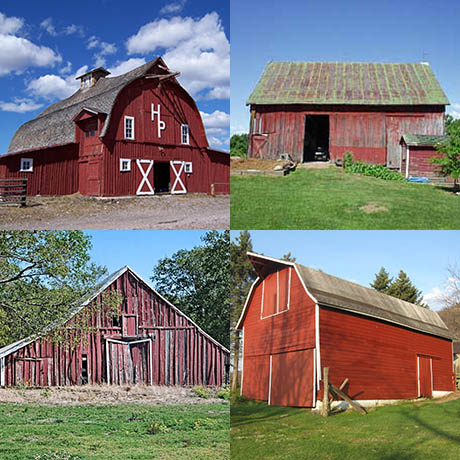
Things get pretty technical, but, in short, “it’s because of the details of nuclear fusion — the particular size at which nuclei stop producing energy — that iron is the most common element heavier than neon.” If you also factor in the temperature of our Sun (and any star stable and long-lasting enough to sustain planets with life on them) as well as the speed at which the outermost electrons in the iron atom spin, Zunger concludes, “iron is going to be, by far, the most plentiful pigment for any species which lives on [sic] a star that isn’t about to blow up.”
Furthermore, in a detail that Zunger actually doesn’t mention, about 2.45 billion years years ago, for reasons scientists don’t fully understand but that seem to be tied to the evolution of photosynthetic cyanobacteria, the Earth experienced something called the “Great Oxidation Event.” Prior to that, oxygen was nearly absent in the atmosphere of early Earth; after that, the iron in ancient soils turned into rust.
So, to sum up: many barns are painted red because paint protects the wood against weathering; because the pigment that went into red (or, more accurately, “Spanish Brown”) paint was the cheapest available two centuries ago, due to the abundance of iron oxide in the soil (due to nuclear physics and blue-green algae) and its ease of preparation for use; and because, despite the fact that green is as cheap as red today, humans tend to display a preference for the familiar.
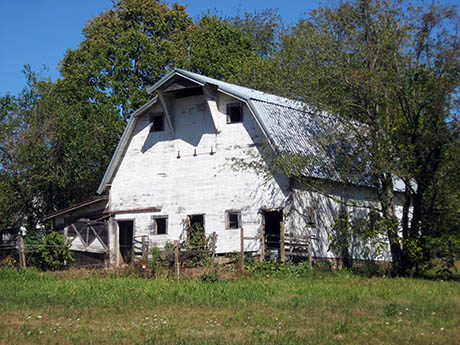
IMAGE: A white barn photographed by Nyttend, via Wikipedia.
Of course, some barns are white. Whitewash, a mixture of chalk, lime, and water, was also cheap — even cheaper than Spanish Brown in areas with iron-poor soils but readily available limestone deposits left by ancient marine life — and possessed of both antimicrobial properties and sanitary connotations.
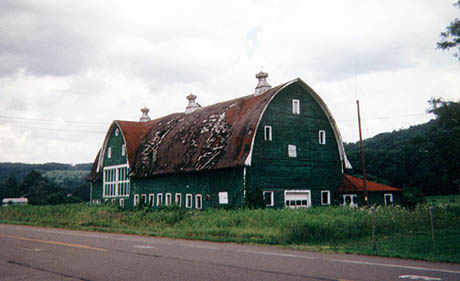
IMAGE: The green Sears barn in Newark Valley, NY, via The Barn Journal. It was originally painted yellow.
And some barns are green, but there is no accounting for taste.

